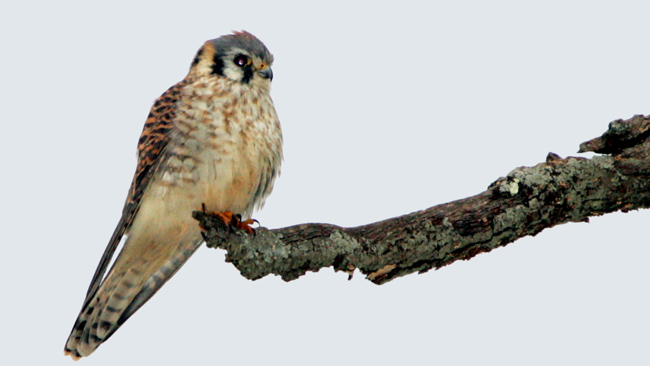Species Spotlight
American Kestrel (Falco sparverius)
Kestrels are the smallest falcon (about the same size as an American Robin) in North America. Its plumage is striking with rufous coloration its back and tail. Although the American kestrel is widespread, meaning they live year round throughout much of the United States, the northeastern kestrel population is declining. Today the kestrel is listed as a Species of Special Concern in New Jersey (not yet endangered or threatened but on its way).

Kestrels are found in open, grassy habitats – especially ones that have cavities for nesting and perches for hunting. Kestrels can be seen hovering in grasslands, pastures and parklands or perched along the road on telephone lines. The decline of kestrels in New Jersey is likely due to destruction of grasslands from development. Also, nesting cavities are lost. As we clean up our fields, we remove trees with nest cavities the kestrels use.
Researchers have not determined the exact reason for kestrel declines but, we do know that the availability of cavities for nesting appears to be a limiting factor. Conserve Wildlife Foundation of New Jersey, in partnership with the Endangered and Nongame Species Program implemented a nest box installation and monitoring program in 2006.